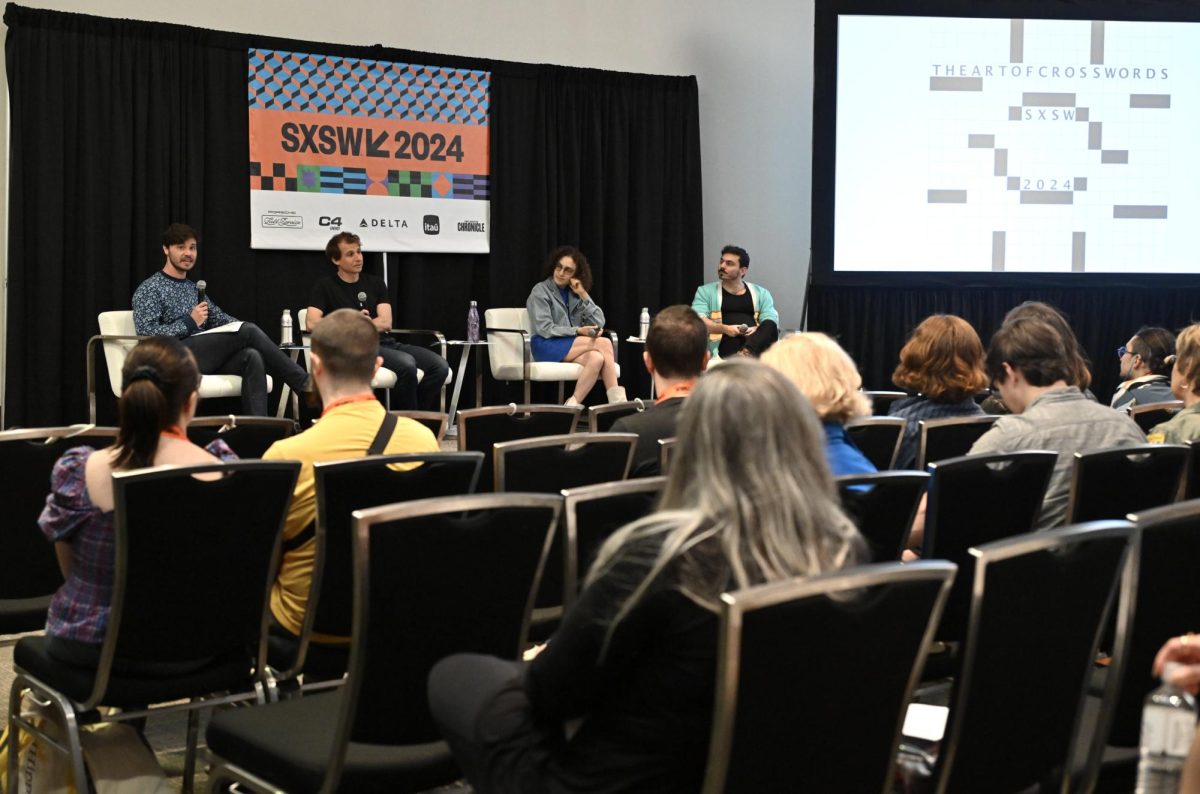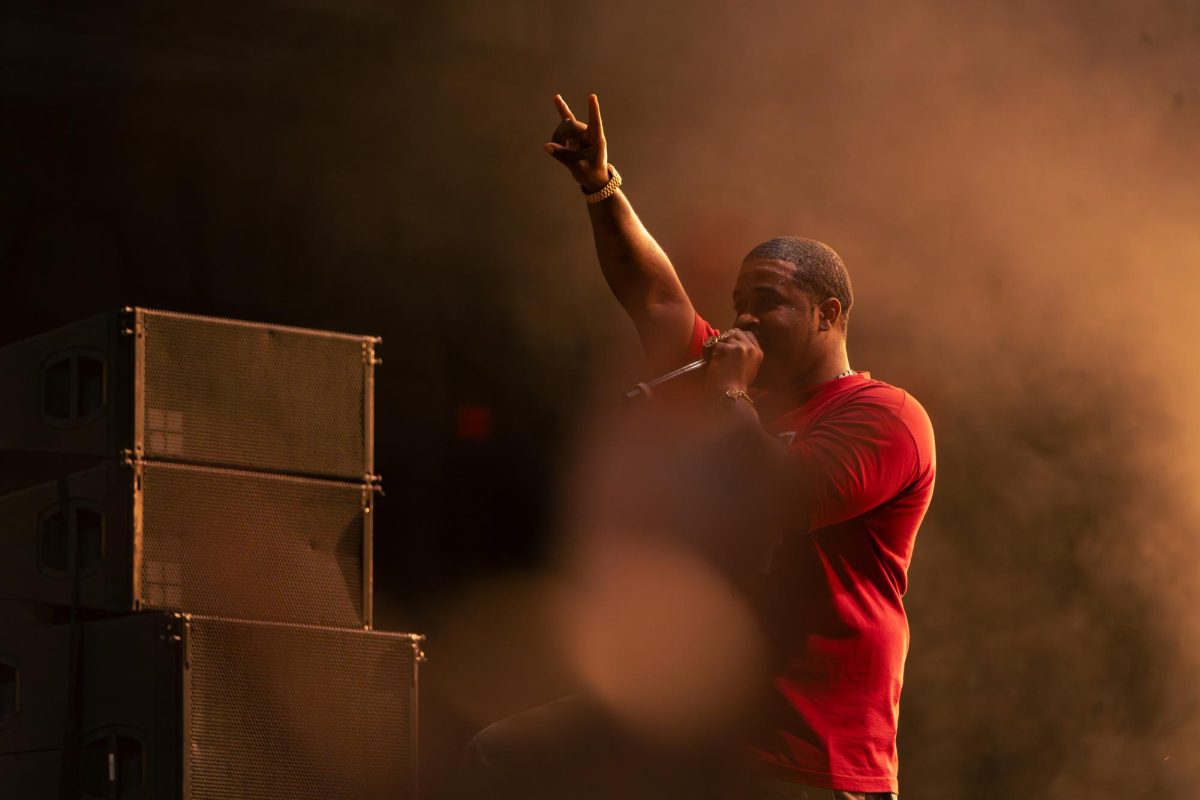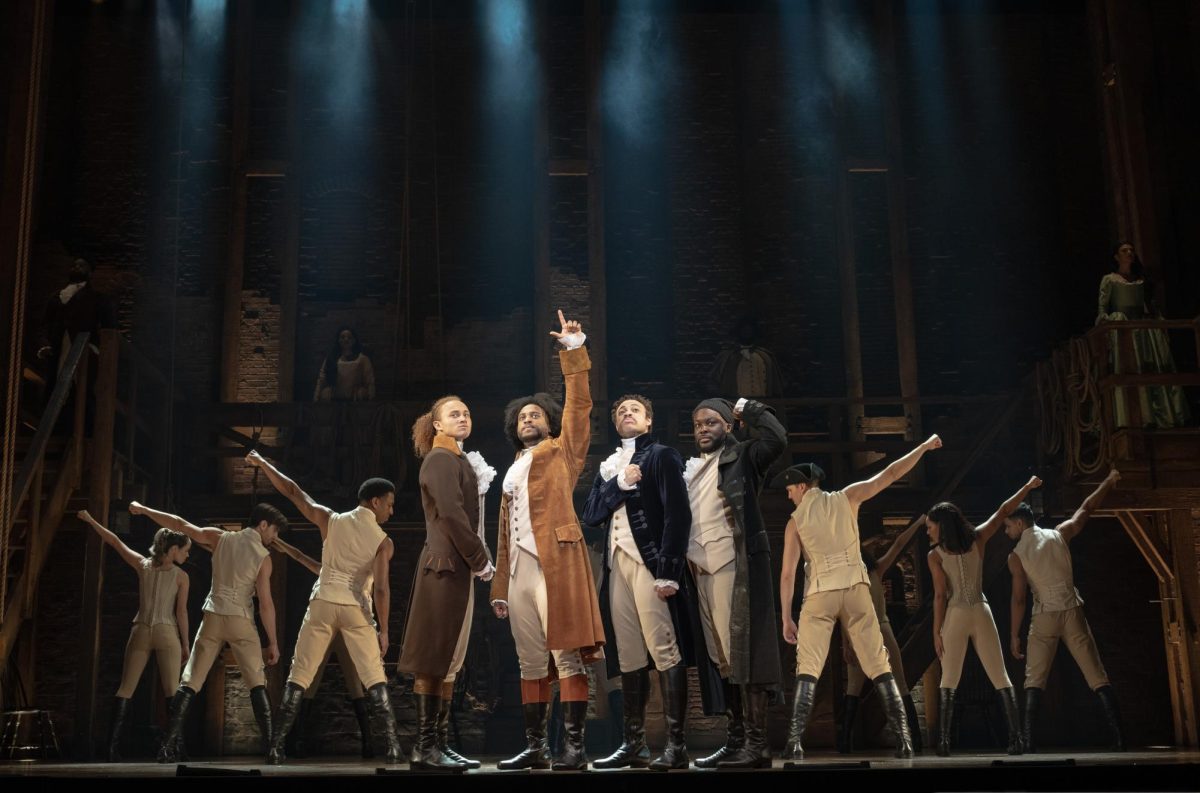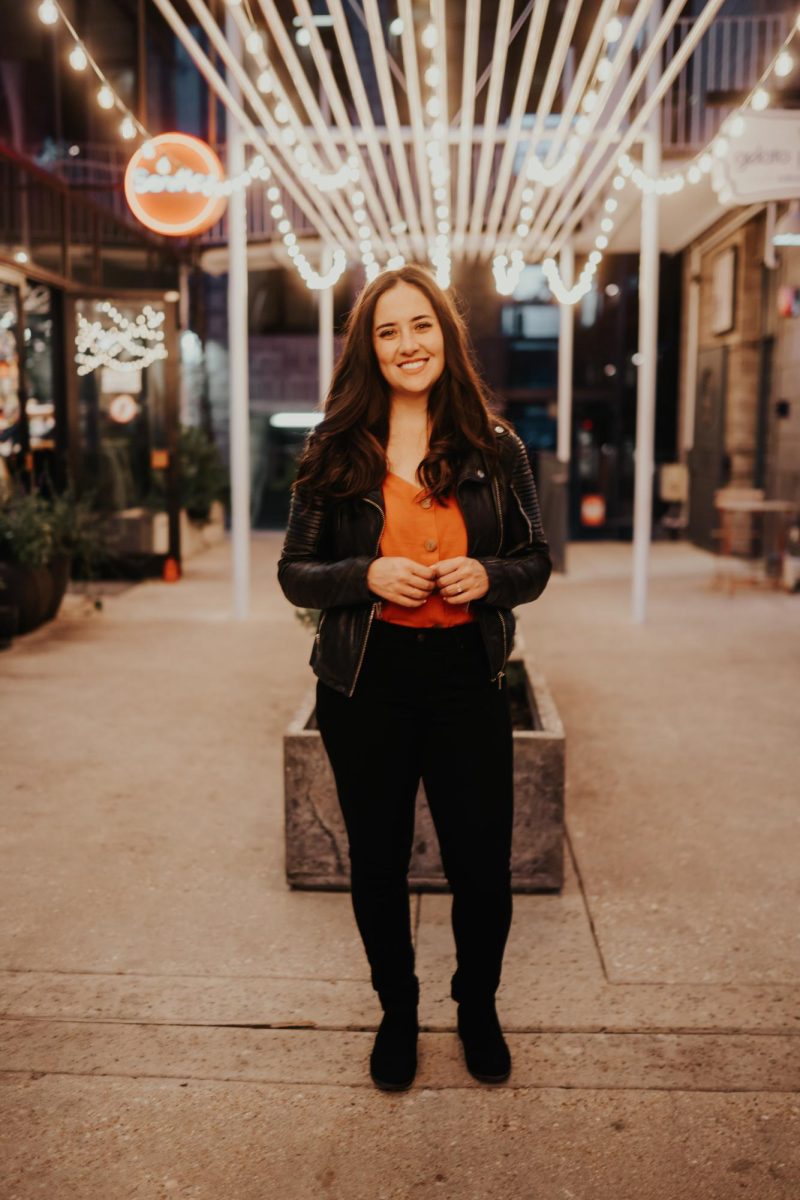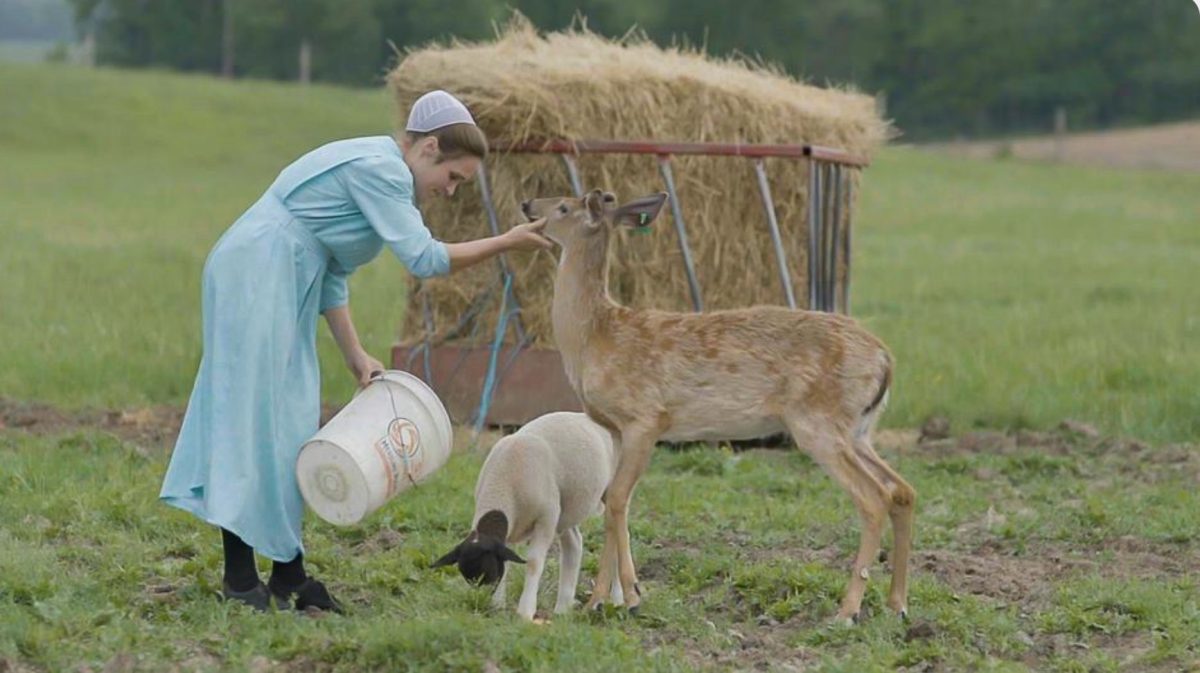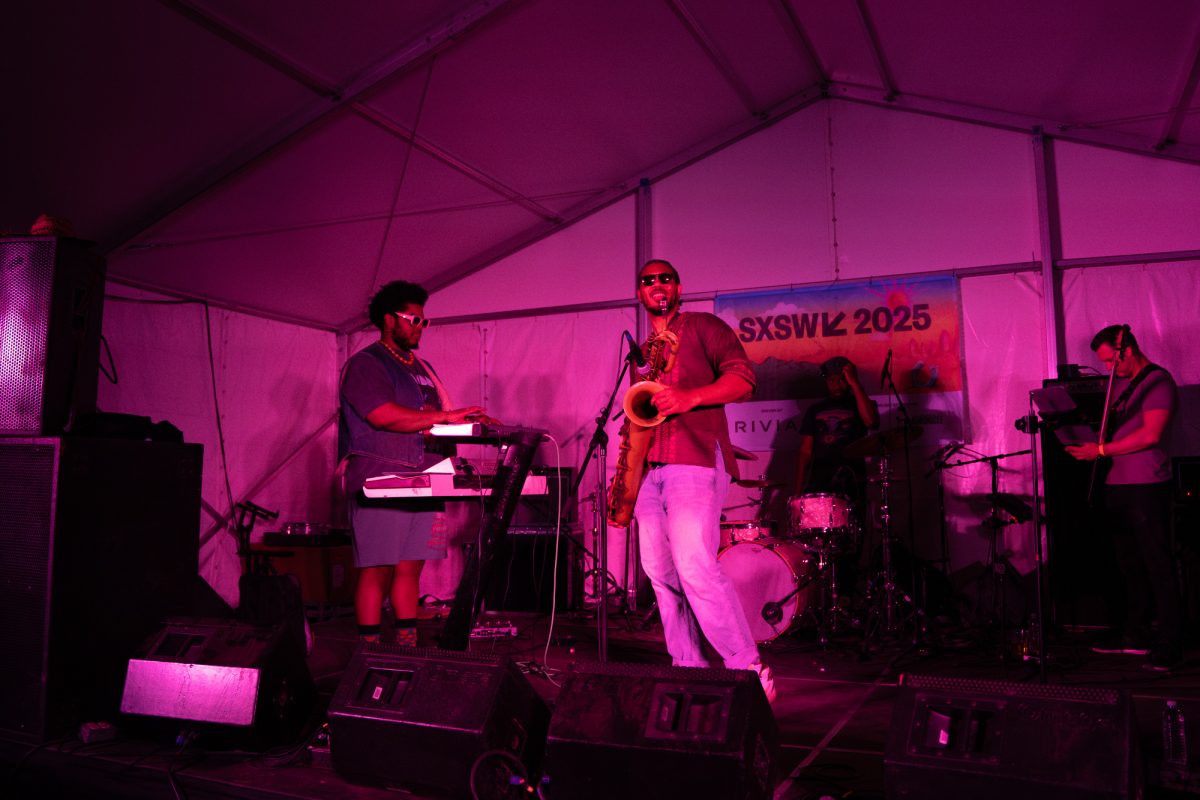Soon after UT professor Kyle Mahowald started solving crossword puzzles in 10th grade, he began to wonder how they were made. His curiosity inspired him to submit his own crosswords, first to his school newspaper and then to The New York Times. In 2004, at age 17, he became The New York Times’ youngest crossword contributor.
Only crossword constructor Natan Last would beat Mahowald’s record in 2007. At their SXSW panel on Thursday, the two, along with UT assistant professor Robbie Kubala and author Adrienne Raphel, explored the art of crossword puzzles by walking through their role in people’s lives and the components taken into consideration by crossword constructors.
Mahowald said he and Kubala studied crossword puzzles through the lens of their respective disciplines — linguistics and philosophy — and wanted to reach audiences beyond the academic world. The two submitted the panel idea to the SXSW PanelPicker, through which the community votes for the panels they want to see.
“(We) saw that SXSW was coming up (and) looking for panels and thought this would be a great way to do some outreach to the community,” Mahowald said. “Also, (crosswords are) just really fun. We love talking about crosswords and thought (it) would be fun to have a bunch of people come talk about crosswords.”
Kubala, who became interested in speed-solving when he and Mahowald began dating, moderated the panel, inviting Mahowald, Raphel and Last to explain the most important components of crosswords.
“The three big components of a crossword are what the grid looks like, what the theme is and what the clues are,” Last said.
On the topic of context and cluing, Last gave an example of how the same term — the Kenyan Mau Mau — went from being the answer to “dreaded name,” and “menace” in the 1950s to “fighters for Kenyan independence” in 2013. Last said crosswords reflect how social understanding changes over time.
“You can see how a crossword, which is supposed to be like trivia — question, answer, dictionary definition, unassailable meaning — in fact, is equally socially constructive,” Last said.
On the topic of what the grid looks like, Kubala, from a philosophical perspective, said crosswords satisfy the requirements of an art form, simply because they are designed for an audience to receive them. Last said he also believes crosswords count as art.
“At the end of the day, the crossword is solved, so some people think that it’s not as open to interpretation as other art forms,” Last said. “You look at a sculpture and you say, ‘I see that’ and someone else might see something else. … Someone might know a singer first and get a certain corner fast and someone else might have a literature background and get the southeast corner faster.”
Reiterating Last’s point, Raphel said the crossword community celebrates the different ways of interpreting grids.
“You can have a grid that includes so much,” Raphel said. “It can be easier for one kind of solver than the other ones, and that is such a beautiful nature of the art form.”
Last said the crossword community also incorporates software to determine linguistic patterns and brainstorm themes. Just as SXSW combines everything from music to AI, the crossword encapsulates numerous disciplines.
“The crossword is so capacious as a cultural artifact that people who love tech and AI and statistics can find a home in it, but so can people who love history and poetry,” Last said.

